Estimated reading time: 13 minutes
Can you imagine what it was like to live on the Oregon trail, cooking pioneer recipes every day? Some have a romantic fantasy about cooking over an open fire, but those times were also scary.
You usually cooked over an open fire with wildlife all around. Families had to cook enough for their entire family. Pioneer life wasn't always easy, even once they made it to their final destination.
These pioneers had skills that most people don't have anymore. What would happen if tomorrow the world had no more electricity or running water?
People would have to learn how to cook from scratch. Cooking dinner over a fire is a lot different than cooking with an electric stove or microwave. You’d have to figure out how to tweak recipes and meals.
Pioneer recipes are simple. They didn't have websites and specialty stores to help them find certain ingredients, and many components we regularly use nowadays don't store very well. Everything was prepared from scratch. Some had access to fresh milk and eggs daily, but some did not.
Most of these recipes use Dutch ovens. You put all the ingredients in the Dutch oven and let it cook over a fire. Recipes didn't need a specific temperature or require you to know exactly when it's finished.
Here are 18 recipes that were commonly used during the pioneer days. They're all easy to make and they all taste great.
Want to save this post for later? Click Here to Pin It On Pinterest!
Ash Cakes
Ash cakes were a pioneer staple for their simplicity and minimal ingredient requirements. These flatbreads were cooked directly in the ashes of a campfire, making them perfect for life on the trail.
Ingredients:
- 2 cups of cornmeal
- 1 tsp of salt
- Water (enough to form a dough)
Instructions:
- Mix the cornmeal and salt in a bowl.
- Gradually add water until the mixture forms a firm dough.
- Shape the dough into small patties.
- Place the patties directly into the hot ashes of a campfire.
- Let them cook for about 10 minutes on each side, brushing off any ash before serving.
Ash cakes are best enjoyed warm, and pioneers often ate them with a dollop of wild berry jam or a drizzle of molasses.
Corn Dodgers
Corn dodgers are small cornbread pieces that you can eat as a snack or serve with stew or thick soups. They’re delicious, perfect for dipping into gravy or even syrup. Kids love corn dodgers.
Ingredients:
- 2 cups of cornmeal
- 2 TBS of butter
- 1 TBS of sugar or molasses
- ½ tsp of salt
- 2 cups of milk
- 1 tsp of baking soda
Instructions:
- Mix all of the parts, aside from the baking soda, in a hot Dutch oven.
- Let the butter melt.
- Once all of the ingredients are thoroughly mixed, remove it from the heat.
- Let it stand for a few minutes and mix in the baking powder.
- Using a large tablespoon, drop spoonfuls of the mix into another hot Dutch oven or skillet.
- Cook these spoonfuls until the edges turn brown in the melted butter.
Cornmeal Mush
Doesn't the name cornmeal mush sound delicious? Nowadays, anything named mush doesn't seem so appealing, but cornmeal mush was an easy breakfast for pioneers to make. It's hardy and keeps you feeling full until the next meal.
Ingredients:
- 4 cups of boiling water
- 1 cup of cornmeal
- 1 TBS of lard
- 1 tsp of salt
- Dried currants
Instructions:
- First, put the currants in the boiling water, letting them cook for several minutes.
- Next, put in the cornmeal and frequently stir to stop the cornmeal from clumping together.
- Add in the lard and salt, stirring for three minutes.
- Now, remove from heat and serve.
- Add butter and molasses for flavor.
If you prefer, you can let it sit at room temperature until it becomes semi-solid (like in the picture below). Then you can slice it up.
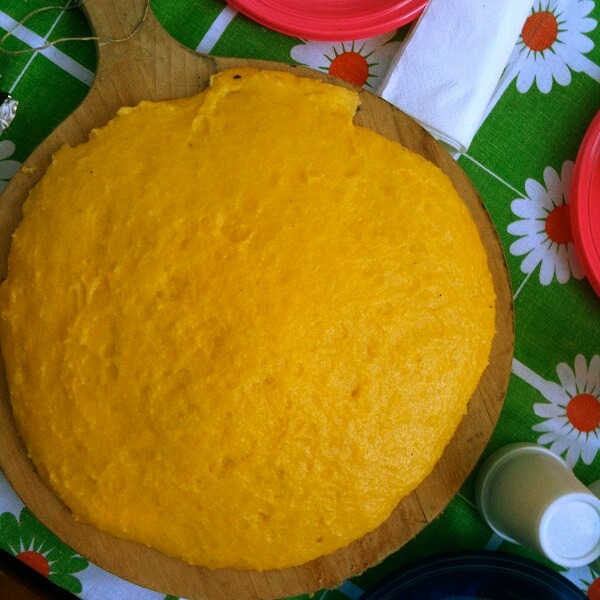
Cured Bacon
As you can imagine, refrigeration wasn’t possible on the trail out West. Bacon was an essential meat during this time. A family of four used around 400 pounds – seriously – of bacon! Instead of refrigerating or freezing the meat, pioneers had to cure the pork meat to ensure it lasted until they reached their new home.
Pioneers packed bacon in a barrel with bran, so the extreme heat experienced on the prairie wouldn’t meat the fats. Here’s a simple recipe that pioneers might have used years ago.
Ingredients:
- 1 pound of brown sugar
- 1 pint of molasses
- 1 tsp of saltpeter
- 8 quarts (a peck) of salt
- 5 gallons of water
- 5 pounds of pork meat
Instructions:
- First, mix the pound of brown sugar, a pint of molasses, and saltpeter to create the cure.
- Saltpeter is potassium nitrate that can be used to preserve meat.
- Sprinkle the salt over the meaty side of the pork meat and add the cure mix.
- Put the pork meat into a tight barrel.
- Put the hams first, pork shoulders next, and middlings last.
- Then, pour the brine over the meat.
- The pork meat needs four to seven weeks in the brine.
- Then, you can slice and cook the bacon as your family needs.
Fried Apples
Everyone needs a bit of dessert, even the pioneers on the trail. Apples are one of the few fruits that could have survived that long journey westward. Fried apples are perfect for breakfast, dessert, or both.
Ingredients:
- 4 slices of bacon
- 6 to 8 granny smith apples
Instructions:
- First, fry the slices of bacon in a Dutch oven.
- Remove the bacon from the pan.
- Peel and slice up the Granny Smith apples.
- Put the apples in the bacon grease in the Dutch oven.
- Cover the oven with a lid, letting the apples cook down, but don't let them to become mush.
- Serve the fried apples with butter or cream and crumbled up bacon. Delicious!
Jerky Gravy
Sometimes, meat was in short stock while on the range, but the protein was needed. The jerky gravy could be added over soda biscuits, potatoes, or cornbread to make a meal heartier.
Ingredients:
- Chopped jerky
- Lard
- Flour
- Salt and Pepper
- Milk
Instructions:
- In a cast iron pan, heat grease and add the jerky into the pan until it's nice and crispy.
- Remove the chunks of jerky.
- In a small bowl, combine the milk and flour to form a paste.
- Put the paste into the grease and stir slowly until smooth.
- Add the jerky bits back in and season to your taste preferences.
Johnny Cakes
Cornmeal was such an important, versatile staple that pioneers took with them everywhere. You can find similar recipes that make tortillas. Johnnycakes were created with corn because it was so plentiful.
Ingredients:
- 2 eggs
- 2 cups of buttermilk
- 2 TBS molasses
- 2 cups of cornmeal
- ½ cup of flour
- 1 tsp of salt
- 1 tsp of baking powder
- 2 TBS butter or lard
Instructions:
- In a bowl, beat the two eggs, then add in the buttermilk and molasses.
- Add the cornmeal, flour, salt, and baking soda.
- Then, melt the butter or lard in the hot cast iron pan.
- Pour the batter into the Dutch oven and bake it until its cooked all the way through.
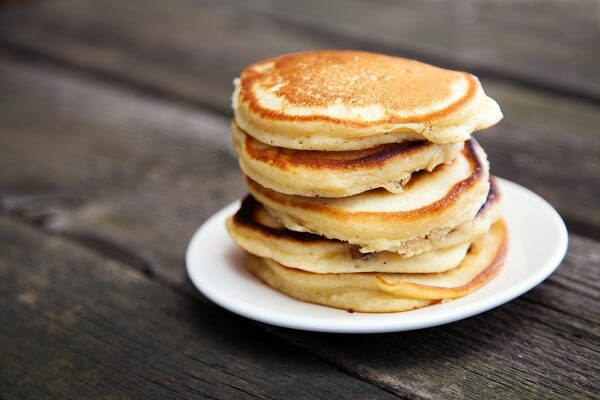
Pioneer Flatbread
When there was no time for biscuits, a quick flatbread on the griddle was the way to go.
Ingredients:
- 3 cups of flour
- 1 tsp of salt
- Water as needed
- 2 TBS of lard or butter
Instructions:
- In a bowl, mix flour and salt.
- Add water slowly until a dough forms.
- Divide into balls and roll them flat.
- On a hot griddle or skillet, melt a bit of lard or butter.
- Cook each flatbread until it's golden brown on each side.
- Best when eaten warm, perhaps with some of that wild berry jam.
Pioneer Potato Soup
On colder days, nothing warmed the bones like a simple, hot soup. This potato soup was a staple.
Ingredients:
- 5 large potatoes, diced
- 6 cups of water
- 1 onion, finely chopped
- 2 TBS of lard or butter
- Salt and pepper to taste
Instructions:
- Melt lard or butter in a pot.
- Add the onions and sauté until translucent.
- Add potatoes and water.
- Bring to a boil and then let it simmer until the potatoes are soft.
- Season with salt and pepper.
- Serve hot, preferably with a side of soda biscuits.
Pork and Mormon Gravy
Some of the best recipes came from necessity. Pork and Mormon gravy are some of the best examples of this, and it’s quite a tasty dinner. You can serve this dinner with potatoes and cornbread.
Ingredients:
- 8 thick slices of bacon or side pork
- 4 TBS of fat drippings
- Flour
- Milk
Instructions:
- Fry the eight slices of side pork or bacon in a cast iron pan until crisp.
- Set the meat aside but keep it warm.
- Measure out four tablespoons of the fat drippings and put it back into the pot.
- Add flour and mix, letting it brown a bit.
- Then, pour in the milk and stir well to scrape up the yummy bits of meat.
- Keep it on low heat and continue to stir until a creamy, delicious gravy is created.
- Serve with the meat and potatoes or biscuits.
Potato Cakes
Potatoes were an essential staple crop for pioneers. They store for months, and if you cure them, they last even longer. You wouldn’t find pioneers without potatoes in their pantry or wagon. Potato cakes are similar to our pancakes nowadays.
Ingredients:
- 6 potatoes
- 2 TBS of salt
- A ½ cup of milk
- Two eggs
- 1 cup of flour
- Lard or butter
Instructions:
- Wash and peel six potatoes, then grate them.
- Put these grated potatoes into a bowl and add the salt, milk, eggs, and flour.
- Mix all of the ingredients thoroughly.
- Spoon this mixture into melted lard or butter.
- Cook the cakes until golden brown on both sides.
- Serve with dinner or some gravy.
Quick Fried Doughnuts
Doughnuts are the perfect snack for pioneers. You can make them over an open fire, and kids love them. They’re a great dessert, and you can serve them with fried apples.
Ingredients:
- Lard, butter, or grease
- 1 pound of flour
- 1 tsp of salt
- 1 tsp of baking soda
- ½ tsp of nutmeg
- ½ pound of butter
- 2 egg yokes
Instructions:
- Put a cast iron pan or Dutch oven over top of a hot fire and start melting the fat of your picking. The pot should be half full of fat.
- Sift together the flour, salt, baking soda, and nutmeg.
- In a separate bowl, beat the half a pound of butter to creamy and add in the flour.
- Separate the yokes from the eggs and add the yokes to the creamed butter and flour.
- Separately, beat the egg whites to a stiff froth and set them aside.
- Now, mix the flour and sugar to make a soft dough.
- Add the stiffened egg whites.
- Roll out the paste, cut out circles, and put them in the melted fat to fry the doughnuts.
- Serve with fried apples, molasses, syrup, or eat plain. Delicious!
Soda Biscuits
Biscuits were a must-have with meals. They can be eaten alone or dipped in grease for flavor. Dip your biscuits in syrup for some sweetness. Soda biscuits were one of the easiest recipes to make.
Ingredients:
- 3 ½ cups of flour
- Milk
- 1 tsp of baking soda
- 1 tsp of salt
Instructions:
- Put all of the flour into a bowl and slowly add one tablespoon of milk at a time until you form a stiff dough.
- In a separate dish, dissolve the baking soda in another tablespoon of milk and then mix it back into the batter.
- Then, mix in the salt and roll out the dough. Make sure it's nice and thin.
- Cut circles out.
- Place the biscuits in a Dutch oven until the sides are brown.
- Make sure the biscuits no longer feel doughy.
Split Pea Soup
Split pea soup was a hearty and nourishing meal that pioneers relied on during cold nights. Dried peas stored well and could be cooked slowly over a fire for a comforting dish.
Ingredients:
- 2 cups of dried split peas
- 6 cups of water
- 1 onion, chopped
- 1 carrot, diced
- 1 tsp of salt
- A small ham bone or piece of salt pork (optional)
Instructions:
- In a pot, combine the split peas and water.
- Add the onion, carrot, and ham bone or salt pork if available.
- Bring to a boil, then reduce to a simmer.
- Let the soup cook for 2-3 hours, stirring occasionally to prevent sticking.
- Once the peas have softened, mash them slightly to thicken the soup.
- Add salt to taste.
- Serve hot, and enjoy with a side of soda biscuits or cornbread.
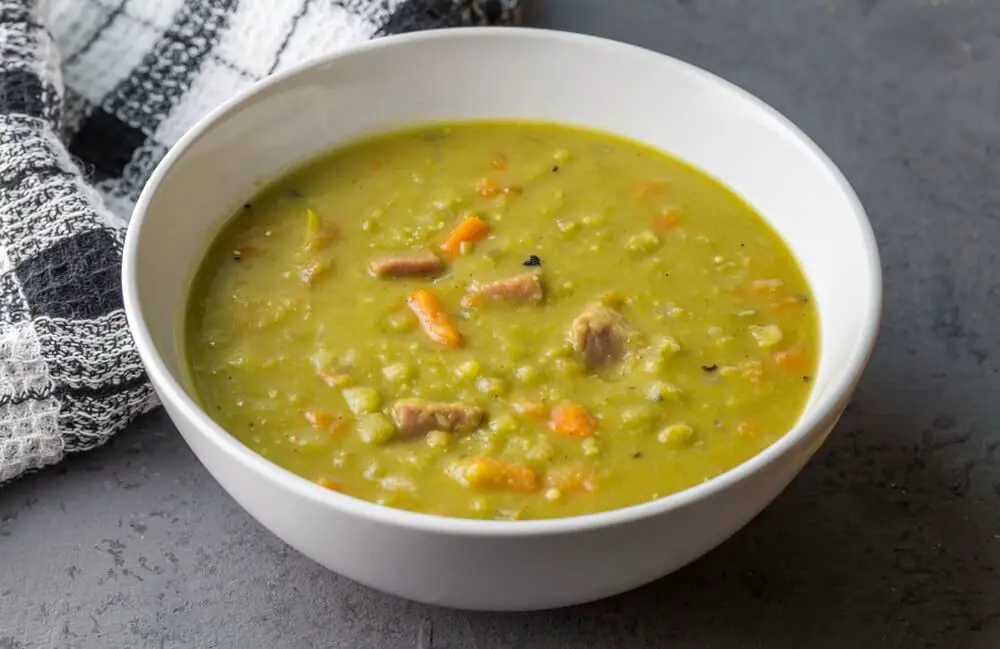
Sun-Dried Tomato Stew
When fresh tomatoes weren't available, pioneers often turned to sun-dried ones, bringing a robust flavor to their meals.
Ingredients:
- 2 cups of sun-dried tomatoes
- 5 cups of water
- 1 cup of chopped vegetables (carrots, peas, beans)
- 1 pound of meat (like beef or venison), cubed
- 1 TBS of lard or butter
- Salt and pepper to taste
Instructions:
- Rehydrate the tomatoes in water for a couple of hours.
- In a pot, melt lard or butter and brown the meat.
- Add vegetables and the rehydrated tomatoes with their water.
- Bring to a boil, reduce the heat, and let it simmer until meat is tender.
- Season to taste.
Trail Mix Porridge
Every morning needed a hearty start. A filling bowl of porridge mixed with whatever trail mix components were on hand was often the answer.
Ingredients:
- 1 cup of rolled oats
- 3 cups of water
- 1 handful of dried fruit (raisins, apricots)
- 1 handful of nuts (walnuts, almonds)
- Honey or molasses for sweetness
Instructions:
- Combine water and oats in a pot.
- Bring to a boil and reduce the heat, stirring occasionally.
- Once the oats soften, mix in the dried fruits and nuts.
- Serve hot with a drizzle of honey or molasses.
Vinegar Pie
When fresh fruit was scarce, pioneers turned to vinegar pie as a sweet treat. Its tart flavor mimicked that of apples or citrus, and it required only pantry staples to create.
Ingredients:
- 2 cups of water
- 1 cup of sugar
- 2 TBS of vinegar (apple cider or white)
- 3 TBS of flour
- 1 pre-made pie crust (or homemade dough)
Instructions:
- Combine the water, sugar, vinegar, and flour in a pot, whisking to ensure there are no lumps.
- Cook the mixture over a fire, stirring constantly, until it thickens into a custard-like consistency.
- Pour the mixture into the pie crust.
- Bake in a Dutch oven or over coals for about 30-40 minutes, until the crust is golden brown.
- Once cooled, slice and serve.
This simple dessert offered pioneers a bit of indulgence during hard times.
Wild Berry Jam
Those days on the trail or in the pioneer homesteads called for some sweetness too, and wild berries were often at hand. This jam was a delightful addition to any meal, be it slathered on soda biscuits or eaten straight from the jar.
Ingredients:
- 4 cups of wild berries (like blackberries or raspberries)
- 2 cups of sugar
- 1 tsp of lemon juice
Instructions:
- Start by mashing the berries in a heavy pot.
- Add sugar and lemon juice.
- Stir continuously over an open fire, ensuring it doesn't stick to the bottom.
- Once it thickens to a jam consistency, remove from heat.
- Allow it to cool and store in a sealed jar.
- Enjoy your jam as you please.
Conclusion
Remember, pioneer recipes were all about making do with what was available. Feel free to adjust and adapt based on what ingredients you have on hand. The real spirit of these recipes is improvisation and sustenance. Enjoy your meals by the fireside, and imagine the vast expanse of the pioneering frontier ahead.
Like this post? Don't Forget to Pin It On Pinterest!
You May Also Like:

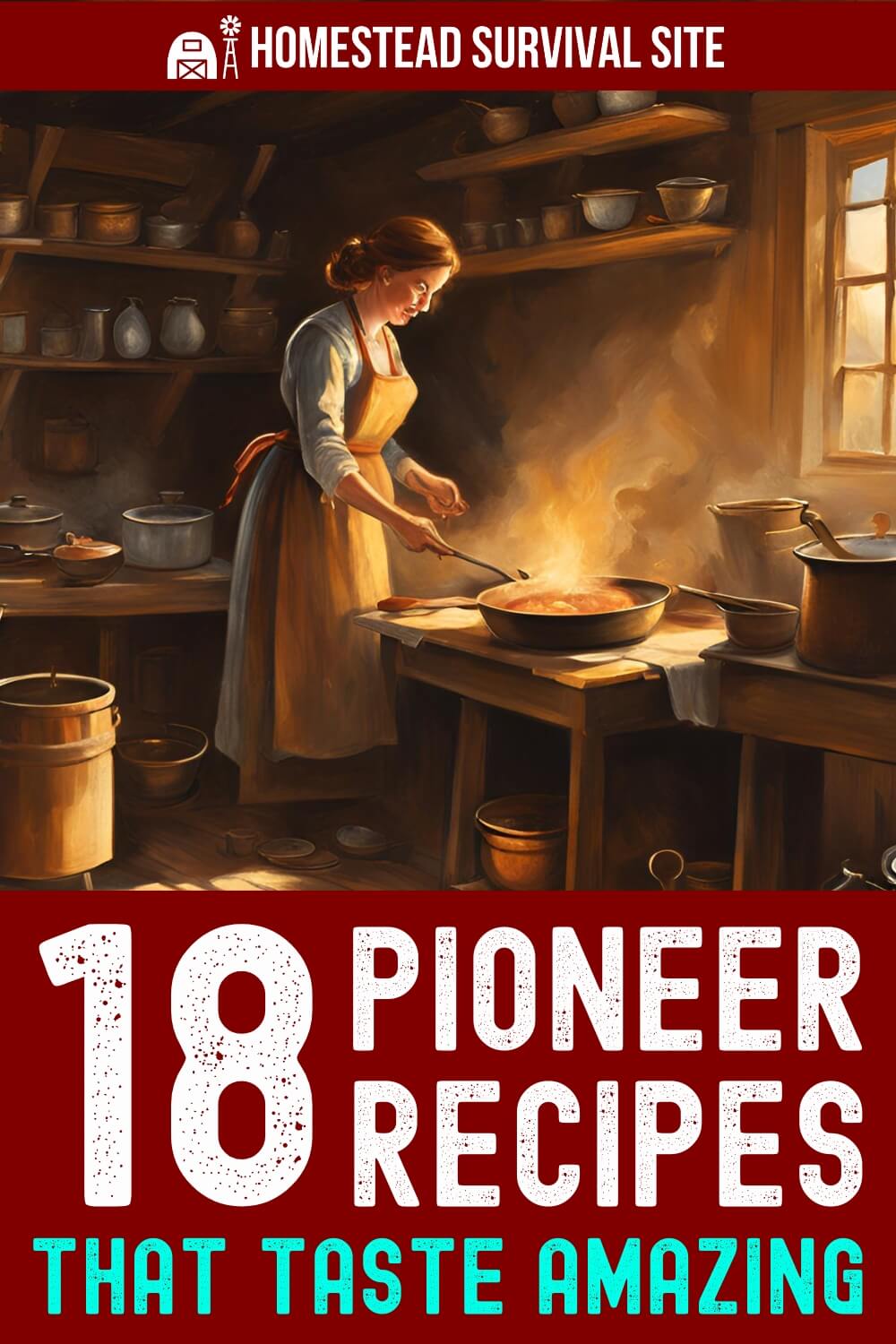







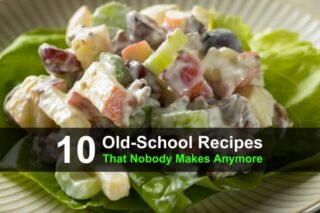

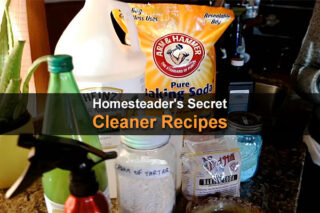


I would like to try to make the fried doughnuts, but was confused with part of instructions. It says to mix flour mixture with sugar, but no sugar amount listed in the ingredients. So how much sugar is needed?
It is the Oregon Trail! Who uses lard anymore? Just ridiculous recipes! My suggestion would be to make an updated list of healthy recipes for survival using the older recipes as references!
For your information lard is actually better to use than a lot of the oil products on the market because it is pure and natural. If you didn’t like the post then why comment. Did you think pioneer recipes would be health conscious?
Epic comeback.
You can still buy lard. Look for it in your grocery store. Ask for help if you don’t see it. It is fun to include.
You need to research lard. If you buy the right kind, it is not harmful.
Use butter
Lard is used every day. (Manteca). If SHTF, lard maybe the only oil or grease available or renewable easily.
I loved your article. I was raised a city girl. Who married a Country boy from Tennessee. So I have been there and done that. For over 20 years I used a wood cookstove to cook on. I also used a fireplace to cook on in winter If I could do it again I would in a minute. I loved cooking that way. I love wearing clothing like the pioneers wore. I guess I am crazy but at 69 and married for 50 years I am allowed to be a bit crazy. Unfortunately I can’t find anyone who can sew for me anymore. If I could put my 2 wood cookstove’s up I would. I have a big one but I also have a small one called a summer oven stove that is used just like it says in the summer outside so the house does not get too hot. I have also smoked pork for the winter and butchered cows, chickens, Turkeys, ducks, goat, someone even gave us some bear meat one time. MY hubby didn’t like that. Dear, Elk, Antelope, and a lot of other game meat. It does not faze me a bit. I even did my canning on the wood cookstove.
Although I never cooked on a wood stove I have known those who did. I am a Tennessean. I’ve canned and milked, raised my own goats and chickens and cattle. Grew most of our vegetables.
Other than your own children, anything any sweeter than bottle feeding a calf or kid? I and made my own butter & butter milk.
Cornbread w/your own butter and buttermilk.
Simply heavenly.
Cooking with Lard? Oh, yes. For cornbread and fruit pies.
How awesome! Wish I could do that.
Johnny Cakes – baking powder or baking SODA? Your recipe mentioned both. I attempted the recipe with powder…pretty sure that’s it. Can you confirm that please?
My batter was MUCH too stiff to pour. Seeing that, I used a lot more buttermilk and got some tolerable johnny cakes, albeit quite greasy. I might try the johnny cakes again using ONE cup of cornmeal, with the supply nearby if I need to add a little more.
My daddy grew up on these in the Midwest. I have looked everywhere for the recipe ( gramma had it memorized and I was too young when she passed.
Thank you. He’s 88 and mentions then often
Grocery store lard usually has bleaching agents and preservatives in it. If it’s been HYDROGENATED; it has trans fats in it. you need to find organic lard. it’s available at Wal mart. it doesn’t have all that junk in it.
when I saw your corn dodger recipe; it reminded me of the movie Rooster Cog burn. The corndodgers he ate were fried in raccoon fat.
I have lard in butter and cottage containers I placed in when I bought a 5 gallon bucket years ago–the price now for what I gave $25 is about $110 so yeah, I’m glad.
Lard is healthier than any of those oils from GMO.
Yeah, the pigs eat that GMO, but not as bad as straight oil from GMO plants.
Are there ever any low carb survival foods safe for a diabetic to eat? I mainly have canned green beans. It is very frustrating trying to find something.
If you don’t use olive oil, most oils are GMO. I buy my lard from a local butcher, melted and packaged on-site. It’s better than the lard from Walmart. In the 1960s, a study was done in England to show that animal fats were bad and hydrogenated fats were good. It was paid for by these companies, of course. Everyone can draw their own conclusions!